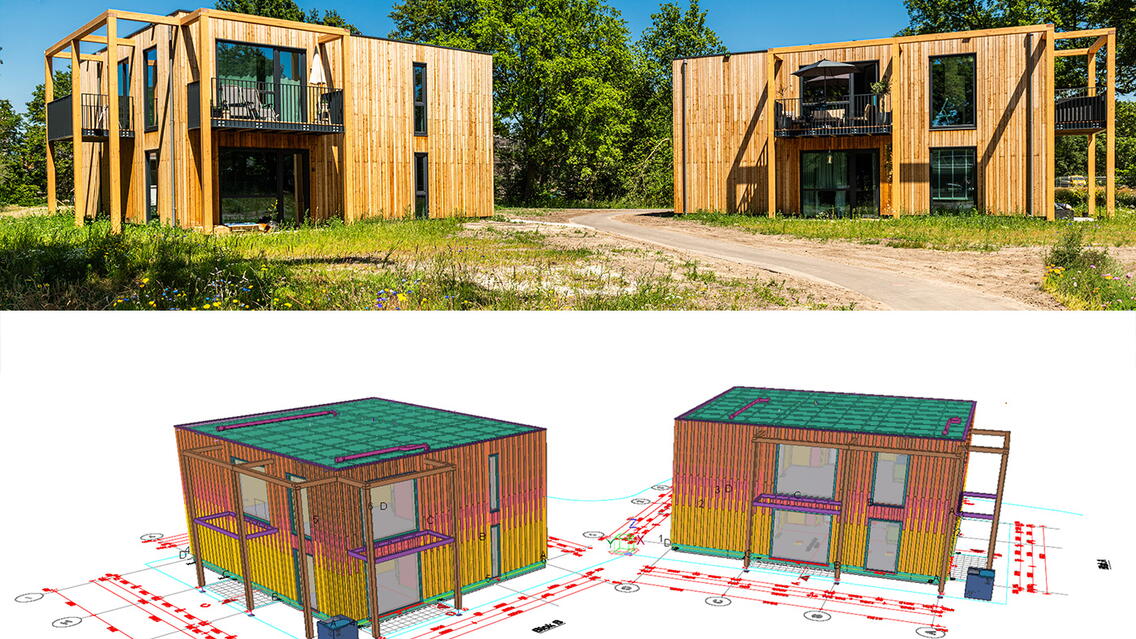A neighborhood where nature is the basis and the houses are ‘only’ guests: that is what the Eindhovense Buurtschap Te Veld stands for. A leading project in which ‘movable’ timber construction homes are used as a fully-fledged part of the total housing supply.
Barli realized various modular homes in the project, by varying the target group’s dimensions and appearance. In ‘Kamer A’, the prefab wood builder from Uden built 7 apartments with indoor storage, divided over two residential buildings.
Municipalities and housing associations from all over the country come to take a look at the area on the Castiliëlaan in Eindhoven. Seven hundred movable wooden houses will be built here and remain for 30 years. It's a creative solution to energetically tackle the housing shortage and get the housing market moving, and it's also a nice place to live!
Although the houses can be moved, they will remain standing in place for thirty years. The green, social neighborhood is divided into so-called ‘rooms’, where each room consists of a few dozen houses or apartments. The houses are placed in the landscape without disturbing the environment, so that valuable nature will still be here in thirty years’ time. Despite its temporary character, Buurtschap Te Veld is a fully-fledged residential and living area, with modular homes that meet the urban plan and the image quality standard in every respect.
Speed
The speed with which the new residential area is being realized is exceptional. This also applies to the two apartment buildings that Barli realized in Kamer A. The permit was granted in October and the homes were ready for transport from Uden to Eindhoven in December. The houses were placed in the beginning of January. They comply with the permanent building decree, have sustainable materials (wood as a renewable building material) and have a Triple A energy label.
Level of detail
Where LA Architecten Ingenieurs from Veghel drew up the design, the engineers of Barli worked out every detail of the modular home in 2D and 3D for production. The Tekla Structures model, therefore, has a high level of detail, from fall protection during assembly in the housing factory to roof slope insulation, kitchen cabinets, and overflows.
Consideration has also been given throughout the entire process to the possibilities of limiting transport and minimizing saw loss / waste. From wooden decking and prefab pergolas to the planks of the facade cladding: everything has been optimized in terms of dimensions and installation method. One of the many sustainability benefits of prefab, modular construction!
Cooperation
Various co-makers were an integral part of the design and production process. For example, the W-and E-installers drew their installations in the 2D model, after which Barli engineers converted them to 3D for the timber frame production. Co-maker Tullenaars drew the steel balustrades and the stairwell in the Tekla model so that production and assembly seamlessly connected to the residential building that was built in the housing factory of Barli.





